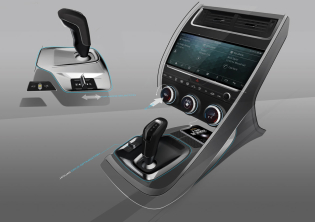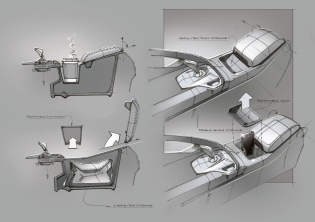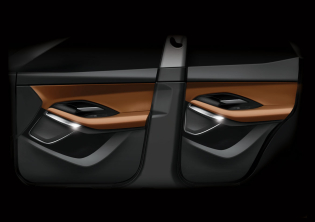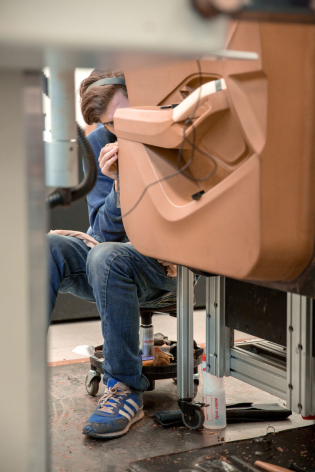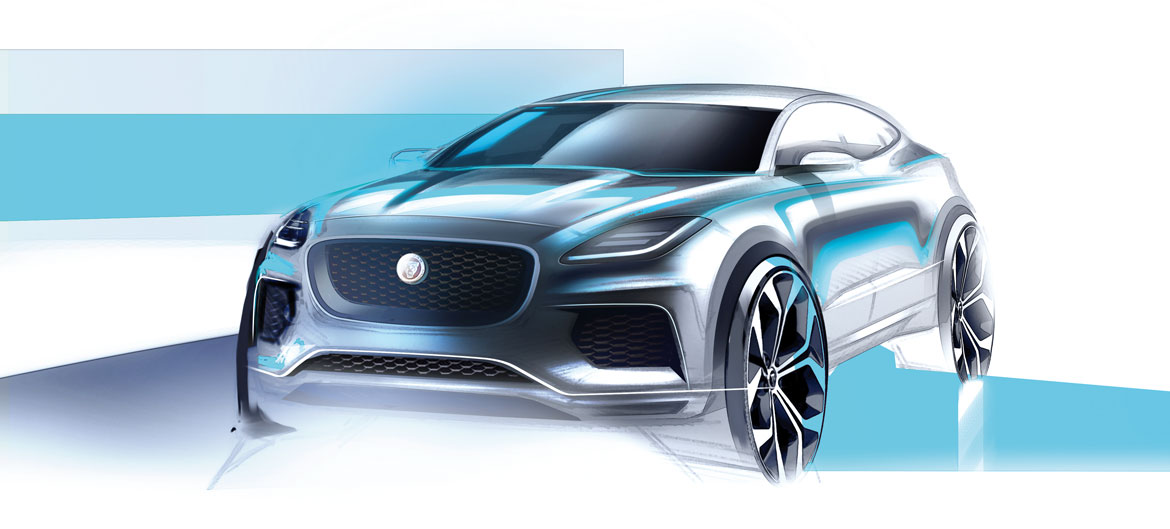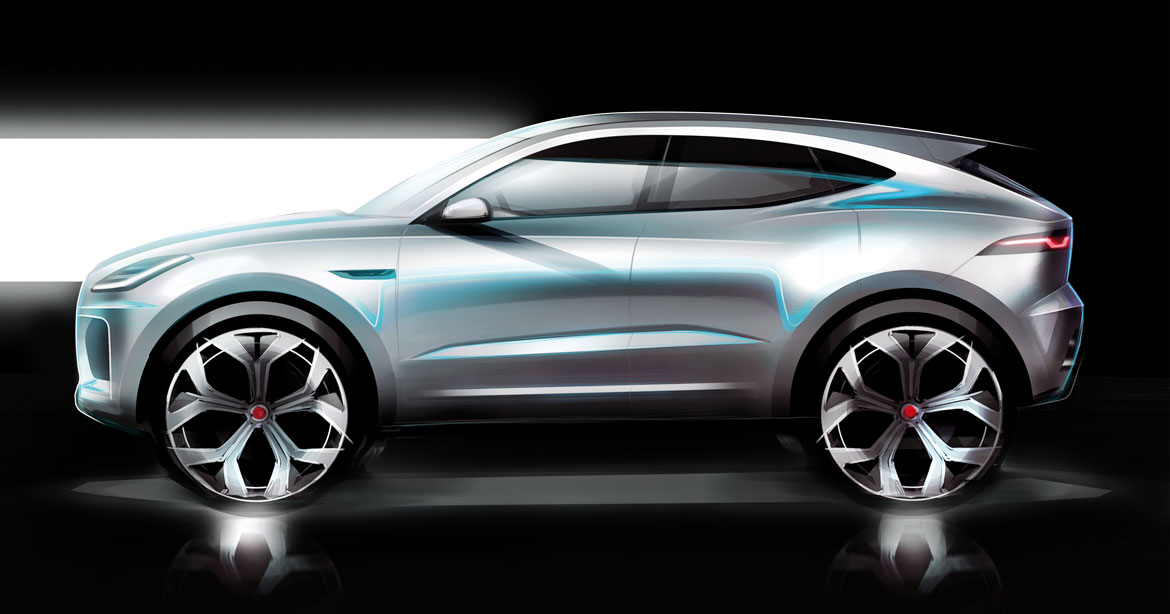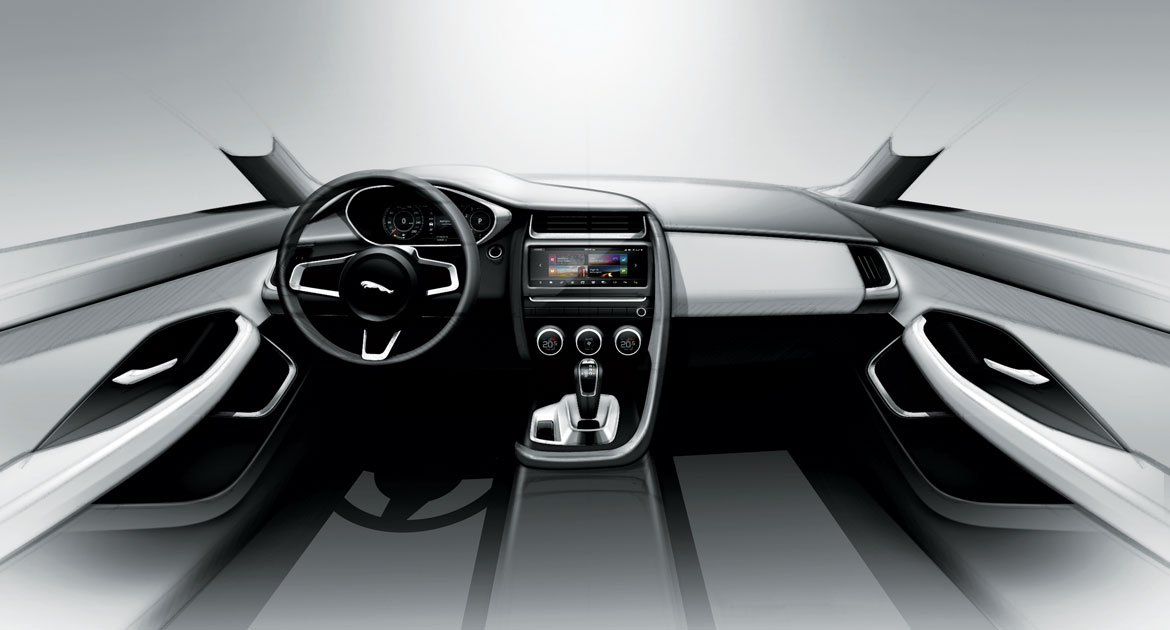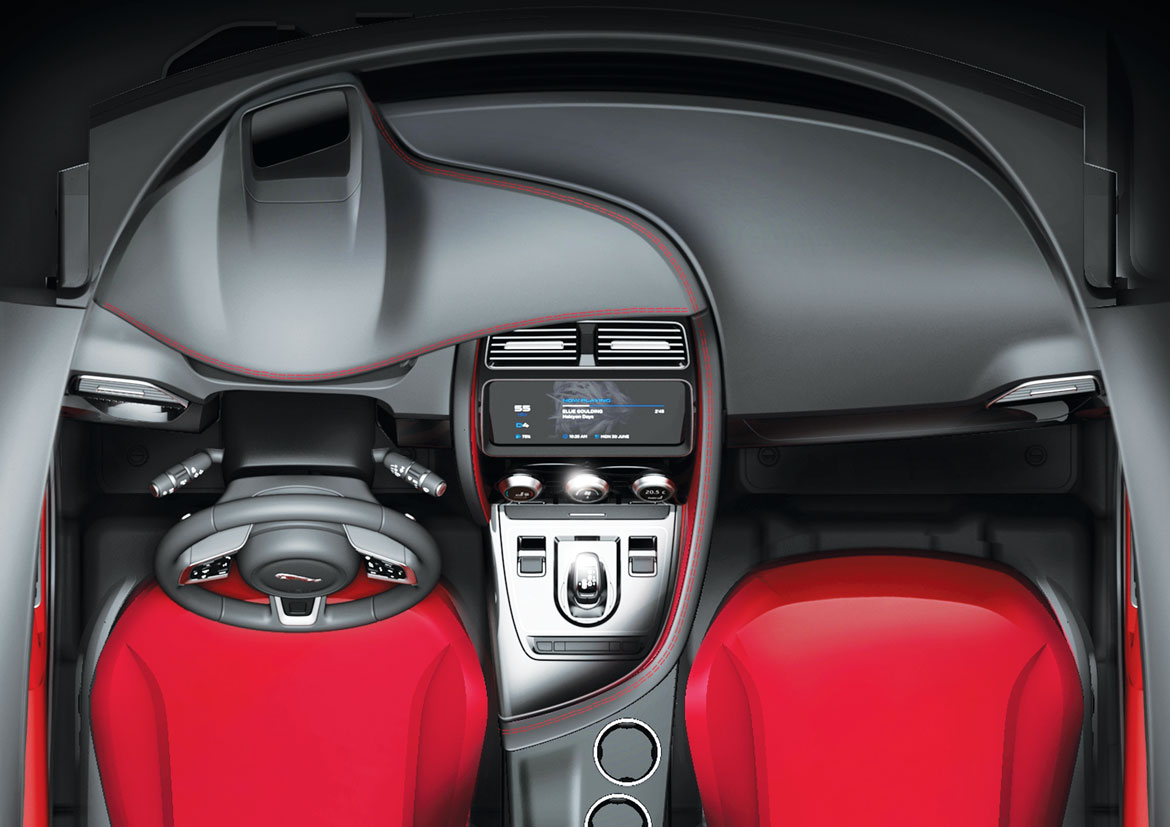Every style centre has its own secret stories, proposals for cars that the public will never see, and models that designers create on their own initiative and present to management as additional products not envisaged in the current production plan. “Every now and again, though, a few projects do manage to get through the system and be approved, provided, of course, that the business plan works. This is how the E-Pace came to be.” Ian Callum recalls the story of Jaguar’s new compact SUV with particular fondness – a car he describes as “sophisticated in its simplicity and closely tied to our sporty identity”
It all started with a rough polystyrene foam model created by Julian Thompson’s advanced design division, which is one of the Jaguar design functions under Callum’s jurisdiction. “It was one of those objects that are not immediately understandable to the layperson, but which we designers often use as they have a lot to say about proportion and emotive feeling. It had big but very visually effective wheels”, recalls Callum, “and we carried on from this concept to evolve it into the definitive car”.
The first thing – other than resizing the wheels, which are still an imposing 21” in diameter – was to inject a healthy dose of sportiness into the design. “I wanted it to have a different character, so I said ‘let’s put some of the F-Type into it’. It was precisely because it belonged to such a different genre that I wanted it to relate even more closely to that car.” This link is especially evident in the lights, in the side daylight opening and in the contours of the tail. The second fundamental step in the evolution of the model was to do away with the additional cladding typically used to break up the bulk of a large vehicle.
The slope of the roofline is one of the key notes of the definitive silhouette. “SUVs often have a lot of unused rear headroom” notes Callum, “so we took this as an opportunity to give the roof a sportier profile. The graphics of the side windows breaks away from the roofline to accentuate the perception of dynamism, while the car itself is still rather tall.
This coupé effect is complemented perfectly by the no less dynamic treatment of the end of the tail, where the vertical line of the tailgate is offset from the bumpers. This is another nod to the F-Type. Callum is quick to point out that the tail view is the aspect that most emphatically expresses the identity of each Jaguar. The E-Pace also ushers in a new styling cue: “The tail light units are based on a new generation of light graphics, with the ‘chicane’ line seen on the I-Pace. These will also be implemented on the future Jaguar XE, XF and XJ”.
Just as important were the countless hours of work dedicated to the front end of the E-Pace. “One of the biggest challenges was getting the balance of the front right. We revised and discussed the project every week together with Julian (Thompson, ed.) to optimise the position and dimensions of the grille and the positioning of the headlamps: we didn’t want these elements to project too far forward and influence the overhang, and they were actually crucial in taking the mass back into the car.”
The entire design of the E-Pace also had to comply with the engineering constraints of the LR-MS platform, the same platform already in use on the Land Rover Evoque and Discovery Sport, with transverse engine mechanicals.
The F-Type was also referenced in the definition of the interior, with its driver-centric cockpit. The passenger compartment itself is contoured around the passengers. “This offers a very positive, intimate and comfortable feeling, which is perfectly suited to a car of this type. It’s great to have lots of space, but it’s also important to feel cocooned on board the car – and we know that this also appeals a lot to female customers”, says Callum. “However, we put a lot of work into optimising space usage, creating numerous stowage compartments, bins in the doors, centre console and in every corner of the cabin, and numerous adaptable features.” The technology on board is equally impressive, with elements such as the new 10” TFT touch screen.”
Full article in Auto&Design no. 227



